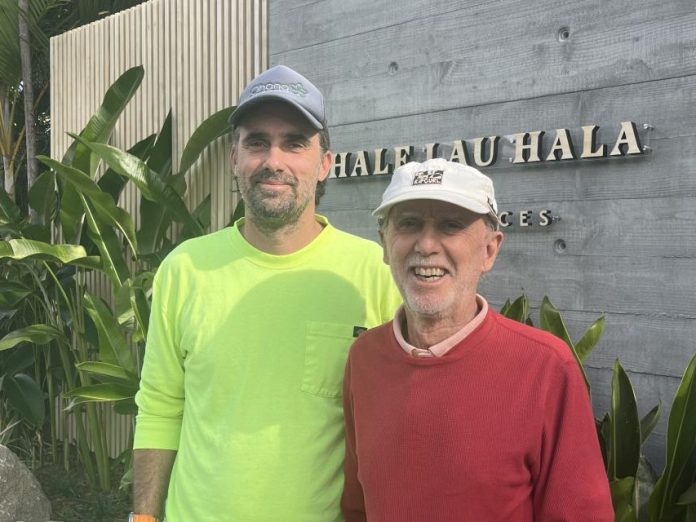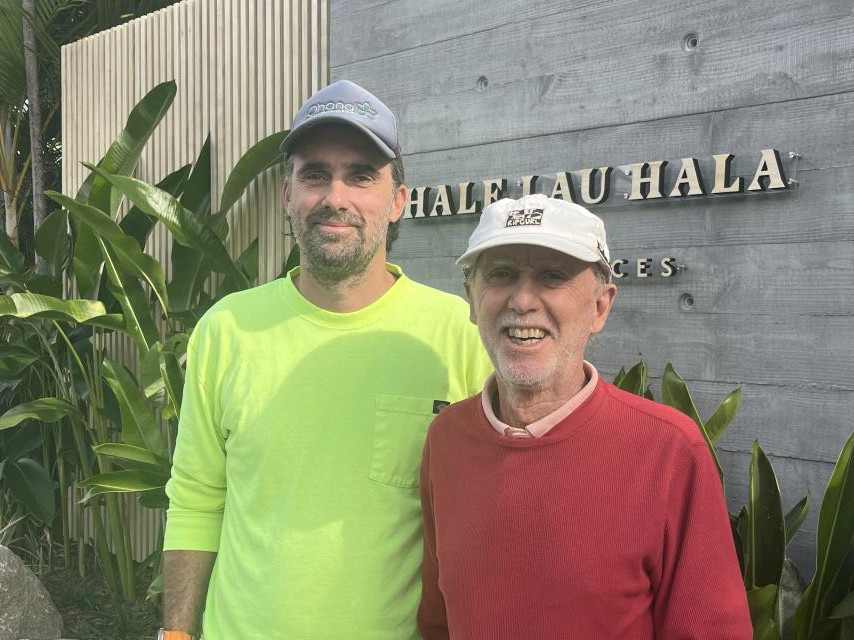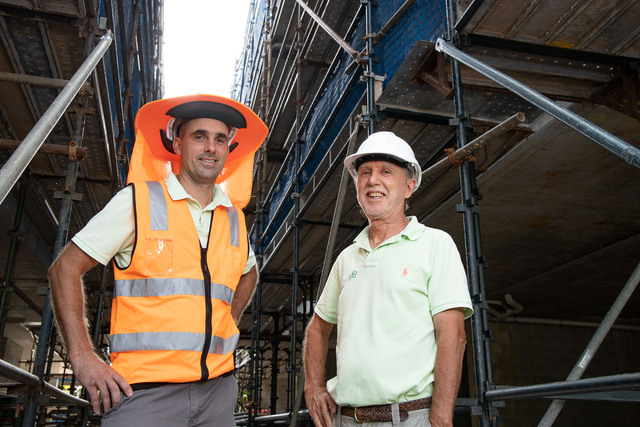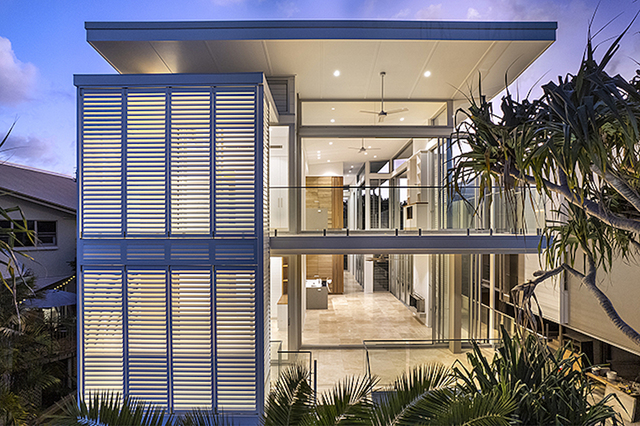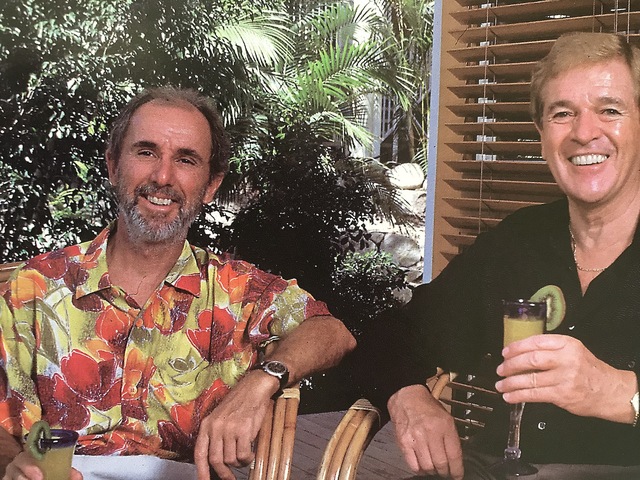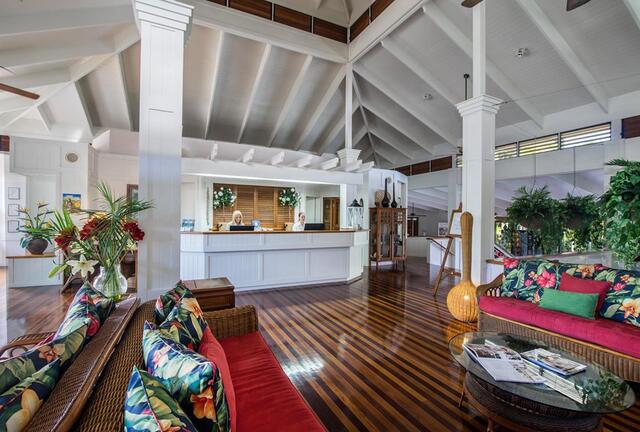The Covid era was an extremely tough one for the building industry, both from the supply side and the demand, and nowhere more so than in Noosa.
If you take a paddle or a boat ride around the lower river system or the man-made canals now, you can see that the industry is very much back in business, with development company branded site walls masking block-filling McMansions in various stages of construction all along the waterfronts. But it is only a few short years since it was engulfed by the perfect storm – cashed up customers with time on their hands and JobKeeper payments in their wallets who can’t travel and want to build or fix up the holiday house instead on the one hand, and tradies who can’t keep up with demand but also can’t get the supply chain moving on the other.
But tradies and developers – often one and the same – are nothing if not resilient, a trait perhaps best exemplified in Noosa by the Tatton family, a name synonymous with ground-breaking construction projects, large and small, since the late 1970s. When lockdown kicked in back in March 2020, Sam Tatton remembers standing out on narrow William Street in Noosaville with his father Jim, looking back on the pile of scaffolds on their block (previously a backpacker hostel justly famous for once housing Brett Massoud’s Bratpackers restaurant, but every block on William has a history), wondering if the build could continue.
He says: “We’d started right at the end of 2019, so we were only just beginning. It was really tough, but I think we realised we just had to manage our way through it.”
“It” is a complex of six spacious and sunny luxury apartments named Hale Lau Hala (house of pandanus, in Hawaiian) which continues a Tatton Hawaii-Queensland motif which had its beginnings in the late ‘80s and reached its manifestation in the lush tropical village that is the South Pacific Resort on Weyba Road. A bit over four-and-a-half years since the Ohana Development Group turned the first sod on HLH, I am sitting in a makeshift site management office in the garage of one of the apartments (it’s another trait of the Ohana style, that all the frills go into the building, not the affectations) with Tattons senior and junior on the week that the project is officially complete.
“Our original timetable was to do the first two buildings (four apartments) over 18 months and the last one and the final landscaping over another 18 months,” says Sam. “So we’re 18 months late. Not so bad when you consider that by the time we started the first buildings we thought we were good, that the worst was over. But we weren’t good because the problems kept dragging on, and on. We had contracts at the start but a lot of them fell apart because people just couldn’t fulfil them. You have to make the decision, do we start suing people or just keep moving forward and find replacement contractors, which is what we did. Fortunately, the market moved with the price of construction.”
Jim adds wistfully: “By comparison, we built the whole of South Pacific Resort in 15 months, and that’s 104 apartments compared with six here. But with the South Pacific site we could get right around it and drop materials and machinery where they were needed. Here we were dealing with narrow 14 metre-width sites with scaffolds down either side, so the access was terrible.”
Sam: “Because of the nature of the buildings you had to have scaffolding on all sides, which really limited access, so we basically had to get all the trades to work the upper levels before we could work at ground level on the garages and the landscaping. All of that cost us time and money.”
Which is evident, as the sales blurb suggests: “Continuity is maintained between indoors and outdoors. It’s a celebration of space and natural light with high ceilings, organic flow and cross ventilation. With extensive use of privacy screening and glass, an almost seamless delineation between indoor and outdoor living areas is created. No expense has been spared with large format travertine tiles, stone benchtops, high-end joinery and European finishes delivering a true luxury experience.”
But for me the key is the pandanus, which reinforces the privacy screening. Native to both Hawaii and Australia, it is the beautiful plant that encapsulates the Ohana vision.
Jim Tatton, now in his mid-70s, is a Kiwi who studied science and dentistry at university before moving to Noosa with wife Delwyn and one-year-old Sam in 1978. In New Zealand he’d built surfboards to help pay his way through uni, but he also dabbled in low key housing developments. Not surprisingly, he saw opportunities in Noosa’s first housing boom, first at the new Cooloola Estate and then buying a block on Witta Circle on Noosa Sound for $17,000.
Over the next two decades he was to build many of Noosa’s landmark tourist and residential accommodations, including Las Rias, Noosa Quays, Coco Bay, Coral Beach, Skipper’s Cove and Noosa Outrigger, but on his first trip to Hawaii with Noosa realtor Peter Dowling in 1985, his eyes locked onto a whole new world of possibilities. He recalls: “When I first arrived in Noosa, I built a house for a guy who told me I needed to go to Hawaii. As soon as I got there and saw the Halekulani in Waikiki, I understood what he meant.” Although the fabled beachfront hotel has been through many incarnations over more than a century, the bones of the original colonial mansion were what appealed to Tatton.
But when he visited the neighbouring garden island of Kaua’i he had another awakening, and in a strange set of circumstances he was able to capitalise on the island’s worst disaster. When Hurricane Iniki devastated Kaua’i in 1992, causing more than $3 billion damages, Jim had a contract on a house in Princeville, but now he was released from that and found another damaged property for sale in nearby Hanalei Bay.
“It was a pole house on the beachfront road,” he recalls. “Solid red cedar with verandas all around, and not too hard to fix up, with some good local help.” It was to be the building that inspired the concept of South Pacific Resort.
Back in Noosa, Jim bought the caravan park on Weyba Road and as many houses around it as he could, and started planning a concept resort on a five-acre footprint. Hawaiian-style bamboo furniture was made in Malaysia and Jim and Delwyn sourced Hawaiian fabrics and art prints on Oahu, while local designer Kim Walker worked on the colour co-ordination of what would ultimately be 104 fully-furnished apartments set in landscaped gardens. Then they took it to market. In one frantic weekend Jim and sales guru the late Arne Smith put on their Hawaiian shirts and flew to Adelaide where they sold 45 apartments.
Sam, then in his late teens, came into the business in the concluding stages of South Pacific, working mostly on the management rights deals. He soon became dad’s righthand man, and later gained invaluable industry experience working as a project manager for a development company in Maroochydore.
Says Jim: “I worked out that Sam did 15 years under our umbrella, and the way we worked together was I’d look after the core – the bricks, blocks, concrete and steel – and he did the finishes, and I think that’s been his forte.
Sam: “That’s the part I really enjoy, the creativity. Not so much the paperwork, although on this project I’ve pretty much done it all.”
Father Time takes us all under his wing at some point, and while age has not wearied the Tatton partnership, it’s led to some subtle repositioning. Says Sam: “This (Hale Lau Hala) is the first time it’s been my project with Jim watching my back. Prior to me going to Maroochydore, I worked under him, now he works for me! (Laughs). Nah, it’s not quite like that, but on this project Jim has been my supervisor while I buried myself in the administration and the design liaison. It’s important to have someone you trust and who knows exactly what you’re trying to achieve keeping an eye on every aspect of the job, and of course we bounce ideas off each other all the time.”
Jim: “It’s very satisfying to be able to work with your son on jobs like this. It’s the reason I’m still here with my boots on. I think that jointly we have a good feel for what type of products suit the market and over the years as Sam has come into his own, that has become more my role.”
And it’s a role that he’ll be continuing as Ohana moves into its next project, a Wyuna Drive waterfront in collaboration with the ubiquitous designer du jour Paul Clout. Says Sam: “It’ll be a really smart, upmarket home influenced by our Hawaii-meets-Queensland design philosophy and adding some Clout magic to it. I can’t wait to get moving on it!”

